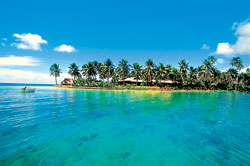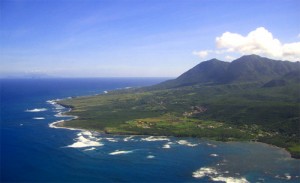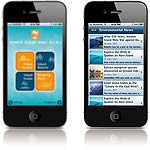The solitude and dreamy isolation offered by private islands are part of their allure, but feeling far away from the cares of civilization may also mean being cut off from the mainland power grid. When connecting to a central power supply is prohibitively expensive or altogether impossible, there are many creative options for the enterprising island owner.
Solar Power
With the aim of providing clean, silent electricity by harnessing the sun’s natural rays, solar power generators are becoming more common for non-industrial applications every year. Barring a few exceptions, solar energy is mainly suitable for southern regions, which typically have a high level of “insolation”, or incident solar radiation. According to NASA, the Caribbean, Central America, and Australia have some of the highest levels of exposure.
A solar energy system for a private island will consist of an array of flat panels, also called photovoltaic cells, which capture a percentage (5-15%) of the sun’s energy. Smaller personal systems will usually store this energy by charging a series of batteries connected to the electrical grid, and a back-up power source such as a generator will automatically take over if the batteries are exhausted. Several well-known islands successfully use solar power for most or all of their needs– Little Hall’s Pond Cay, owned by Johnny Depp, and Nukabati Resort in Fiji.
Wind Power
Despite their futuristic appearance, wind turbines are actually some of the oldest power generators on earth – as early as 200 BCE, windmills were in use throughout Persia. An updated version of this ancient technology, modern turbines convert the wind’s kinetic energy into mechanical energy through the movement of blades on the turbine. This rotational energy is then turned into electricity by the turbine’s generator, and then stored for later use, most often in a complex of batteries.
Wind generators can be small enough to power an iPod, or large enough to cover most power needs for an island resort. As with solar power, however, a back-up source like a generator is necessary should nature not cooperate. Although not as common on private islands as solar power, wind may be catching on – Peter Island, a luxury resort in the British Virgin Islands, has recently pioneered a wind-power project using two turbines on the island’s coast.
Geothermal Pumps
Known as a ground source heat pump (GSHP), the earth’s capacity to generate and/or absorb heat can be used in an environmentally-friendly central heating and cooling system. Similar in appearance to a refrigerator, GSHPs use a heat pump to either transfer warmth from the ground into a home’s air, or remove warm air (like an air conditioner) and force it into the ground. Heat pumps are considered one of the most efficient ways of generating hot water, and, consuming a small amount of electricity relative to their output, are very cost-effective after the initial investment.
While still a somewhat uncommon technology, geothermal power has been in development for decades and is far from speculative – Iceland famously uses geothermal energy to run much of the country’s electrical grid, and projects have proven to be successful in Hawaii, Japan, and the island of Nevis in the West Indies. While the current personal uses are mostly limited to providing heating and cooling of a home’s air and water, geothermal energy may someday emerge as a viable method for creating home electricity, too.
Diesel Generators
The most conventional power source on this list, diesel generators are based on a century-old German technology that allows for the conversion of fuel into power through compression and heat. Relative to generators that use other fuel sources like natural gas or gasoline, diesel generators are the most efficient method of conversion and consequently, are relatively cost-effective, with fuel consumption as the primary expense.
These generators, ranging from 8 to 30 kW for non-industrial use, are commonly employed across the world as a back-up power source when the main grid fails, such as in severe storms or technical malfunctions. In the case of private islands or other remote locations, they can be used as a main source of electricity and heat: for example, all of the electricity on Trinity Island in Greece is provided by diesel generators, as is that for the island of Pakatoa in New Zealand.
Further resources:
http://www.omafra.gov.on.ca/english/engineer/facts/03-047.htm


![579px-SOMA_Wind_generator[1]](http://www.privateislandnews.com/wp-content/uploads/2011/04/579px-SOMA_Wind_generator1-289x300.jpg)



